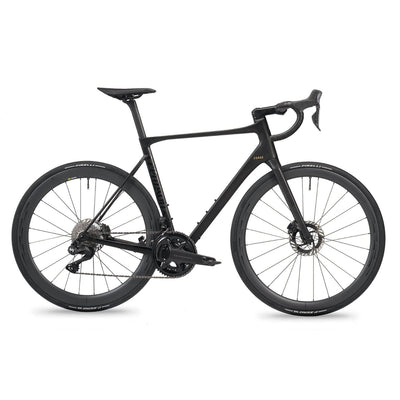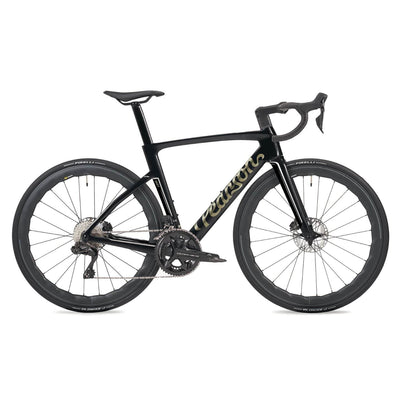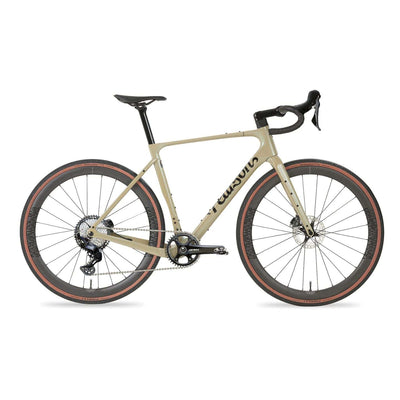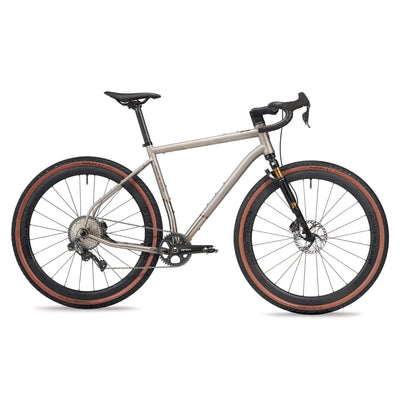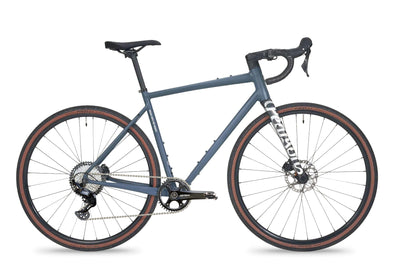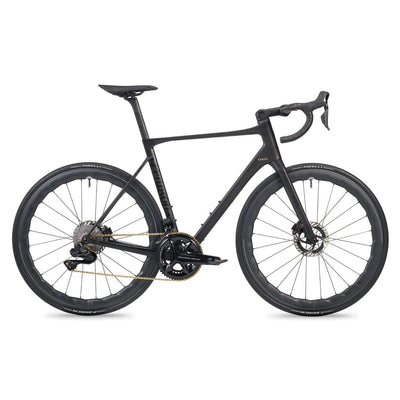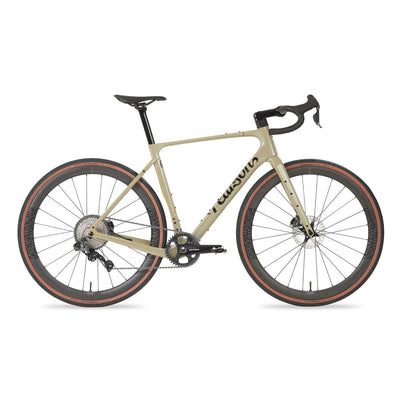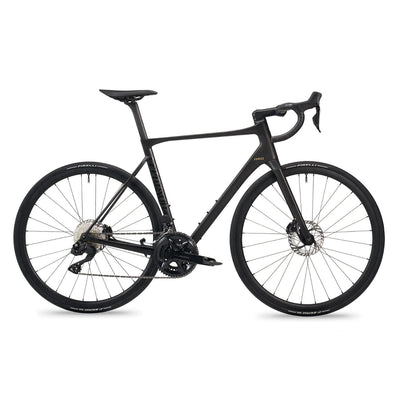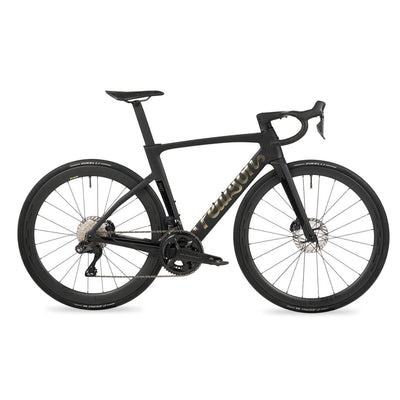How to light your way this winter
If you're planning to ride through winter, you'll need a decent set of bike lights. Even if you don't expect to be out after dark, a mechanical or just an over-long cafe stop can see you riding after dusk. During the day the sun will be low too, so it's a good idea to use lights to up your visibility.
We've run through the options to help you to see and be seen this winter.

Let’s start with front lights. There are tons of lights available and the classic split is between to-be-seen and to-see-by lights, with the former good for lit roads in urban areas and the latter for unlit roads and, for the more powerful, for heading off-road.
What’s the divide between the two? There’s no hard and fast rule, but it’s often taken as 500 lumens output. There’s no reason why you shouldn’t run a more powerful light on lit roads. But the best bike lights are now as powerful as car headlamps, so you may get flashed by dazzled drivers.
It’s best to power down your see-by light a bit if there’s traffic, which will conserve your battery too. Save higher power settings for when you really need them. Point your light down as well (where it will be of most use to you anyway to help you spot potholes).
In Germany there is a specific regulation about the beam pattern a light can emit, designed to avoid dazzling oncoming traffic. Called StVZO any light sold in Germany has to comply with this reg and you’ll sometimes see lights with this label sold elsewhere too.
To see by

You can spend hundreds of pounds on a top spec front light for off-road use. For most of us that will be overkill. Unless you’re riding very technical terrain you’re unlikely to need the illumination on offer, and even then you may be better off with a lower powered bar-mounted light and a helmet light, which will let you spot the way ahead better on twisty trails. You’ve also got a back-up if one light runs out of juice mid-ride. Look for a pairing that combines spot illumination from the helmet light and a wider beam from the bar-mounted light.
Your eyes will adapt quickly to low light too, so you don’t need huge illumination to ride off road. I’ve ridden on a canal towpath with a 100 lumen output Exposure light, with my only mishap when I tried to make a 90-degree turn on a wet tree stump I hadn’t spotted. Power down your light when you’re riding on less technical terrain or on road and save its full power for trickier trails, helping to conserve battery.
To be seen
To be seen lights are usually inexpensive and the majority are now USB rechargeable, so you don’t need to worry about keeping a stock of coin cells. Most are also really compact, so they won’t take up bar space, but still offer long run times, especially if you set them to a flashing mode - a good idea to make you more visible in any case.
Make sure you position your light somewhere where it’s easy to spot though, as hands on brake hoods can reduce side-on visibility of a light mounted in the middle of the bars. Vel front lights are designed to fit anywhere on your handlebars and have a curved design to increase side-on visibility, while Topeak sells the Sidelux, a pair of amber lights designed to give you side-on illumination.

Lighting trends
Alongside longer run times and higher output, increased connectivity is finding its way into bike lights. That allows you to control all your lights from one place as you ride. Lezyne has this function in its Smart Connect lights and Cateye with its Sync lights, both of which allow you to link your front and rear lights and control the rear from the front light. Cateye's Sync lights include wearables as well and you can hook up as many as seven lights.
Some of Exposure’s lights can be linked to a bar-mounted control via its technology, also called Sync, which allows you to change output for a bar-mounted and helmet light in tandem. Its Reflex tech automatically dims the lights as you’re riding more slowly and increases brightness on faster stretches, so you don’t need to worry about changing brightness settings manually and can conserve battery life too.
Of course, Cateye, Exposure and Lezyne all have an app to go with that, allowing you to choose your own settings and check light and battery status.
The top spec Bontrager Ion Pro RT front light and the more compact Ion 200 RT front and Flare RT rear light can be linked up and controlled via a bike computer or Bontrager’s wireless remote.
Garmin has its RTL515 rear light which incorporates a radar, changing its lighting pattern as vehicles approach from behind and alerting you on your GPS. There’s an equivalent Garmin front light with GPS connectivity.
On the cosmetic side, all-black lights are being supplanted by silver and metallic sheen effect anodised casings, adding a bit of variety.

Dynamo lights
A lighting option where there are now an increasing number of set-ups available and that’s great for the bikepacker and endurance cyclist is high spec dynamo light sets. Typically housed in the front hub, the dynamo adds minimal drag to your ride when turned off and little when turned on. The SON dynamo hub, for example, adds just 0.4 watts of drag when off and around 5.5 watts when in use and riding at 25km/h.
For that drain on your leg power you get up to 800 lumens of light output. The system is designed to stay on for a period when you stop riding, so you won’t be left in the dark. Exposure says its Revo dynamo powered light will give 400 lumens output for 10 minutes then up to an hour at lower intensity. There are tail lights from major players like Exposure and Busch + Müller that you can link up to your dynamo too.
Although the dynamo adds weight, at around 400g, the lights are lighter than a battery light, with the Exposure Revo weighing a little over 100g. Another plus with a dynamo light set-up is that you can charge your phone or computer too, as there’s usually a spare USB port.
If you go this route, you’ll either need to buy the wheel parts and have them built up for you, or brands like Hunt Bike Wheels sell ready-made dynamo front wheels.
Sometimes the right fork leg of a gravel bike will be designed so that you can route the dynamo cable internally for a neat set-up - it’s a feature of an increasing number of gravel bikes. You’ll find a dynamo hub and lights specced on some urban hybrid bikes as well.
E-bike lights
Another similar option is lights for e-bikes. You’ve got a large battery you’re carrying around with you, so why carry another two for your front and rear lighting?
Again, there are plenty of options, with the big names in lights like Lezyne and Exposure having a range of front and rear lights which are compatible with the majority of e-bike batteries.
Like so many other bike parts, e-bike batteries don’t come with a standardised interface, having different output voltages and interface requirements, so you need to check compatibility, although e-bike lights are usually designed to cope with this variability. Increasingly now, e-bikes come with their own lights ready built-in.
Rear lights

Like front lights, it’s ideal to have two rather than one for nighttime riding, running one in constant mode and the other flashing. That’s because studies have shown that it’s easier for an approaching driver to work out how close a constant light source is than a flashing one. The flashing light’s battery is also likely to last longer than the one on constant mode, so there’s a measure of extra security.
Some lights have an always on/pulsed mode that gives you both in one.
Since you’re never going to need to see by your rear light, outputs are lower than front lights with a corresponding increase in battery life, particularly for a light run in a flashing mode. That means that you can get away with a more compact light and still have massive battery life.
Some rear lights like the Lezyne Laser Drive Rear include additional features like laser lines that stretch out behind you as you ride and potentially encourage drivers to give you a bit more room. Others include an accelerometer that changes the lighting pattern as you decelerate or stop - again Lezyne has this tech in some of its lights as do Cateye and urban light specialist Beryl.
Our lighting options
At the Pearson shop, we sell the highly-rated Bontrager Ion light range. The component brand of Trek Bikes, Bontrager sells a diverse range of lights and Trek is a keen supporter of the use of daytime running lights to up your visibility and road presence. Read our piece on winterising your bike for why we think that daytime lights are a good idea.
The Ion range starts off with the Ion 100R, a tiny USB rechargeable light that mounts with a rubber strap to your handlebars. Run times are between 1.5 and 16 hours, with up to 100 lumens output, while an ambient light sensor automatically alters the brightness in flashing mode to make sure you’re seen and conserve battery power.
The Flare is the equivalent rear light, with five different modes with up to 35 lumens output for the day flash, run times between 8 and 20 hours and a power down function which keeps the lights on if the battery starts to run low.
At the other end of the scale is the Bontrager Ion Pro RT, with up to 1300 lumens output, allowing you to head off-road, and ANT+ connectivity so that you can control output via a Garmin computer.
If you have specific lighting needs you want to discuss, we're happy to give advice and help suggest the best lighting options to keep you riding safely this winter, so pop into the shop or call to talk to us.

